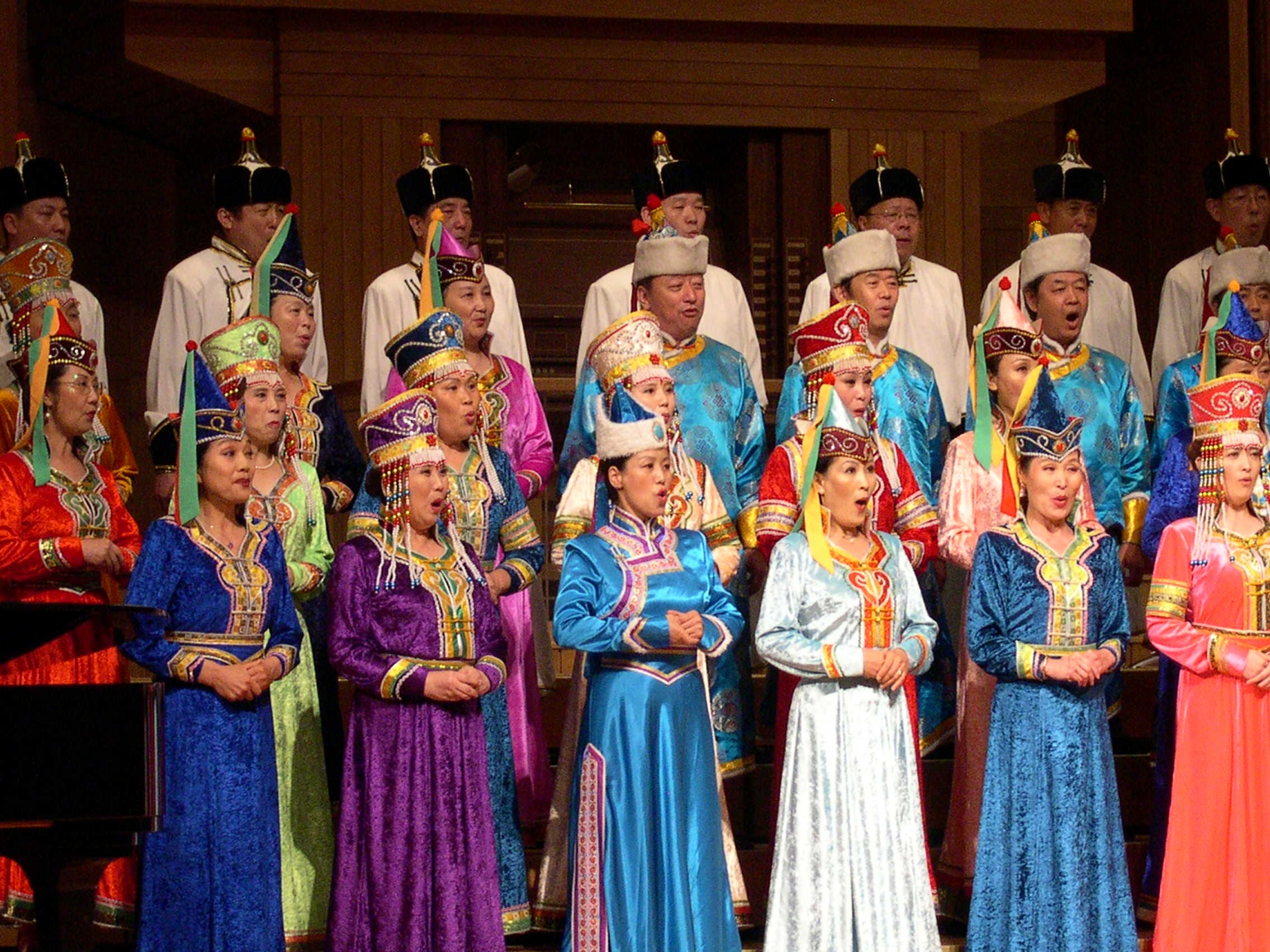Tong Shiu-wai Leon,
Wu Lingfen,
Tian Xiaobao,
Meng Dapeng
Introduction
China’s recent and rapidly growing importance attracts worldwide attention in all manner of different sectors, thus also in the choral movement. The current status of choirs in China is a hot topic. We intended to publish articles on the above topic long ago, but I cannot complete this task on my own because of China’s huge territory. Therefore, I invited Prof. Wu Lingfen, Prof. Tian Xiaobao and Mr. Meng Dapeng, three renowned and reputable choral experts in China, to analyse the Chinese choral scene comprehensively from various perspectives.
Development and Historical Background
Multi-part-singing embedded in folksongs from many national areas in China goes back more than thousands of years. The recent choral development was generated by the introduction of Western culture into China. Our choral history of about the last 100 years has been developing in front of the backdrop of many years of wars, revolution and reform in China, which give rise to the distinguishing features of modern Chinese choral music. It was only in the mid-20th century that China started to concern itself with, and accept, choral arts. But during the late 20th and now the start of the 21st century, Chinese choral pieces and performances have been rapidly developing and yielding fruitful achievements.
This can be seen from Li Shutong’s Chunyou, the earliest choral pieces to Lu Zaiyi’s Yuhou Caihong, written during the 1980s and 1990s. These large-scale historical choral masterpieces such as Huanghe Dahechang signify the achievements of the last century.
Within today’s choral music in China, we find very artistic choral pieces as well as many choral versions of revolutionary songs from different generations. At the same time, the choral pieces most popular with the public are folksong arrangements from the more than 60 minority tribes, all with different cultures. As opposed to many other countries where choral singing is well established thanks to the influence of the Christian churches, China lacks a common religion to promote choral singing to the masses. Choral singing takes place for the purposes of cultural activities and entertainments, and therefore the choral development so far lacks depth and stability, though there has been wide public participation.
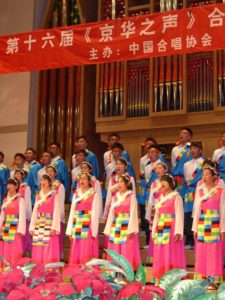
Distribution of Choirs
As estimated from 500 registered choirs in the Chinese Choral Association and other kinds of choral organisations in all the provinces and cities, roughly more than 10 million people in China participate in choral singing. They have been jointly pushing forward choral development in China.
There is only a small number of professional choirs in China – they were once the best choirs in China. But they gradually closed down because of financial difficulty in the recent revolution. There are many choirs in primary and secondary schools and universities, about 1/3 of which practise regularly. Youth palace choirs which supplement music education in schools are usually stable and of a high standard due to their members of a wide range of ages. The number of community choirs and choirs for the elderly is enormous. There are more than 1000 of them in Beijing alone. They do well because their members have adequate time for rehearsals. Supported by corporate leaders, some corporate and employee choirs has been established for more than ten years and are of a high standard, but some of them folded after change of corporate leadership. Similar to the situation in Hong Kong, school choirs in China are so popular that professional choirs appear relatively less splendid. But there are only a few choirs for the elderly or corporate choirs in Hong Kong.
Choral Education
It is not difficult to conclude that the unsatisfactory standard of performance of adult choirs is the result of the lack of in-depth music education in primary and secondary schools in China. As seen from Guangzhou, Beijing and Shanghai where choirs have been better developed, choirs composed of students from primary and secondary schools (“school choirs”) generally perform better than adult choirs.
Choral singing should be an important part of education. Our musical education in primary and secondary schools seldom systematically practises pitch-interval and chord-linking, which is the most important and fundamental training in music lessons at schools in the West.
Renowned Musical Schools in China
There are many music colleges which contribute to choral development in China, including the Central Conservatory of Music, the China Conservatory, Shanghai Conservatory of Music, and Wuhan Conservatory of Music, etc.
Activities
China has supported many types of choral activities, whether professional, semi-professional or part-time. However, almost all large-scale activities are choral competitions. All organisers and participants are passionate about competitions. From youth to elderly – all promote choral development by competitions, which may also entail a strong sense of materialism.

|
Competitions |
Description |
|
China Choral Festival |
High level competition in China |
|
Chungshan Cup National Choral Conductors’ Competition |
|
|
China Children’s Choir Festival |
|
|
China International Children’s Choir Festival |
Co-organised by Hong Kong Treble Choirs’ Association (“HKTCA”) and International Federation for Choral Music (“IFCM”) |
|
“Xiyanghong” Choral TV Competition for the Elderly |
|
|
National Youth Singer TV Competition |
Organised by the largest national media CCTV |
|
Hong Kong International Youth & Children’s Choir Competition Festival |
High level international competition and festival |
|
Concerts |
Description |
|
China Folk Song Choral Performance |
12th November at Zhongshan City, Guangdong Province |
|
Jinghua Zhi Sheng Choral Music Concert |
Organised by China Choral Association (“CCA”) continuously for 14 years |
|
Jinfan Xingqi Concert |
|
|
Yongyuen De Huihuang China Choral Festival for the Elderly |
|
|
The 1st National Socialist New Countryside Choral Congress |
|
|
2008 World Youth Choir Concert Tour (China Station) |
In August 2008, HKTCA invited renowned choirs from 33 countries to form a World Youth Choir to deliver a concert tour in Guangzhou, Macau and Hong Kong |
|
Conferences |
Description |
|
Exchange Conference for Chamber Choirs |
Organised by CCA at Beijing in 2008 |
|
Choral Arts Academic Conference |
In March 2007 at Zhongshan Choral Base, CCA invited national conductors and musicians to analyse the development and problems of current choral singing in China |
|
China Choral Creative Development Forum |
Co-organised by CCA and Tianjin City Education Committee |
|
International Federation for Choral Music Asia-Pacific Choir Summit |
In September 2009 held jointly by IFCM, Wuxi Government and CCA |

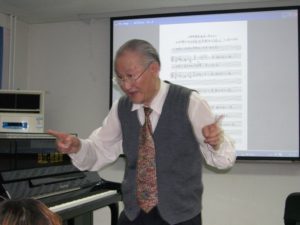
International Choral Exchange Activities
In the new century, experienced choirs from China have regularly performed to the world. In 2000, seven choirs from China participated in the 1st Choir Olympic Competition in Linz, Austria. The China Phoenix Inner-Mongolia Youth Choir conducted by Yalun Gerile and Guangdong Province Secondary School Choir conducted by Xie Jinming respectively won the trophies for choral folksongs with and without instrumental accompaniments. Many strong national choirs like Guangzhou Youth Palace Choir, Shenzhen Secondary School Choir and Shenzhen High School Choir have demonstrated their skills to the world. Furthermore, led by Prof. Ren Baoping, the Beiyang Choir of Tianjin University was awarded the title of “World Choir” as well as $10,000, sponsored by the IFCM at the 2008 Hong Kong International Youth Competition Festival. Hong Kong school choirs such as the Diocesan Boys’ School and the St. Paul’s Co-educational School also had outstanding achievements in international competitions.
Many provinces and cities in China now regularly hold international choral festivals so as to be better linked to the world. The Panyu Xinghai International Choral Festival was held in December 2008. Many kinds of choral exchanges have taken place as well. For example, in March 2008, CSA hosted cultural exchange concerts which were performed by California University (Los Angeles Division), USA, and the Orchestra of Zhongyang Minzu University at Minzu University Concert Hall and Beijing Concert Hall.
Important Choral Organisations
- China Chorus Association (“CCA”)
Established in 1986 under the Cultural Department of the Chinese Government, CCA consists of conductors, choir members, choral composers and choral organisations. It is a first-class national organisation which has sub-committees for conductors and treble choirs. For the past 20 years, it has significantly impacted on Chinese chorus, from its hard early days till the present. CCA now has more than 600 corporate and 3000 individual members spread over 25 provinces, cities and autonomous regions. CCA aims at promoting choral knowledge and choral activities, raising choral standards, recommending choral pieces, strengthening choral theory and academic study, promoting international choral arts exchange, and developing choral arts among different ethnic groups in China. CCA issues two publications – Choral Arts and Choral Newsletter. It is a platform on which choral groups within and outside China exchange information, share news and academic research and learn from each other.
Website: www.cca135.com
- Chinese Musicians Association Choral Alliance (“CMACA”)
CMACA was recently established in Beijing to promote the establishment of choral groups and choral development. CMACA serves national choirs by organising activities, direct contact, advice, training, recommending music, information exchange, appreciation and analyses, performances and competitions, so as to nurture musical ethics and the standard of choir members, enhance team awareness and self-esteem.
Website: www.chorus-china.com.cn
- Music Education Professional Committee of the Chinese (“MEPCC”)
Established in 1987, MEPCC is a national music education and academic organisation for tertiary, secondary and basic music education. It is a sub-organisation of the Chinese Education Academy under the Ministry of Education of the PRC Government and a member of the International Music Education Association under the United Nations Educational, Scientific and Cultural Organisation (UNESCO). The professional committees for music education within the education authorities of all provinces, autonomous regions and municipalities are members of MEPCC and consult this body for advice on their activities.
Website: www.csmes.org
- Hong Kong Treble Choirs’ Association (“HKTCA”)
Established in November 1997, HKTCA is a registered charitable art organisation aiming at promoting children’s and youth singing and music education in Hong Kong, bringing harmony to every family, strengthening the connection among choirs and encouraging international cultural exchange.
HKTCA has also successfully organised international events such as three China International Children’s Choir Festivals and World Symposiums on Children’s Choral Music, in 2005 a World Children’s Choir Festival, and it has invited renowned treble choirs and choral professionals to perform in Hong Kong and major cities in China. In 2006 and 2008, HKTCA hosted the biennial Hong Kong International Youth and Children’s Choir Festival with the vision of it becoming one of the best international choir festivals. From time to time, HKTCA introduces composers and choirs from China and Hong Kong to the world in order to promote world harmony and fraternity in music.
Website: www.hktreblechoir.com
- Macao Chorus Association
Established in 2006, the association aims at promoting choral music development in Macao, carrying out choral exchanges with China and the world. The association has also successfully organised the First International Chinese Chorus Centennial Concert in 2007, the 9th Chinese Macao Chorus Festival in 2008, and in 2008 hosted the World Youth Choir. The association will present the 2010 IFCM Asia Pacific Choral Summit.
- Taipei Philharmonic Foundation for Culture and Education (“TPF”)
Established in 1988, TPF aims at promoting musical activities and further raising the cultural standards of Taiwan. The foundation created and supports groups such as the Philharmonic Children’s Choir, Youth Choir, Philharmonic Chorus, and Philharmonic Chamber Choir.
TPF has been making great efforts in introducing outstanding foreign performers, cultivating native talented musicians, bringing local music to the international stage by organizing numerous music festivals, master classes, cultural exchange programmes and concerts. TPF continues to hold the “Taipei International Choral Festival” which already took place in 1996, 1998, and 2000 and 2002, establishing a brand-new vision to local music-lovers and continually bringing stimulation to the local music fields.
Website: http://www.tpf.org.tw/english/index.html
Repertoire
Western choral music started to spread in China since the start of the 20th century. Chinese choral arts gradually developed from nothing to something, from simple and tiny songs to huge and complex forms. Chinese choral music demonstrates Chinese choral features in different aspects: it learns from the characteristics of Western music; and it organically incorporates the elements of Chinese traditional music and culture into Chinese modern choral compositions.
There are six different forms of Chinese choral pieces:
- The first form has been traditional to choirs since medieval times. The early forms originated from “organum”, “missa”, “motet”, “madrigals” and “chanson de geste”.
- The second form consists of choruses from Western operas of the 19th century, after its birth in the 17th century.
- The third form is a new, modern Chinese choral piece that is based on traditional organum and opera music from the west and accompanies these with elements of Chinese traditional opera, sound projection skills and chords in Chinese folk songs. Huanghe Dahechang and Changzheng Zuge are examples of this form. They represent the major stream of Chinese choral life.
- The fourth form is supplied by the multi-part folksongs in Chinese traditional folk music. This form is historical and originated from minority tribes’ daily lives. They have never been influenced by any modern choirs from the West or China and keep their natural and original forms. Kamzu Dage from Guizhou is one example.
- The fifth form is choral singing by a “band” in pop-songs. This form demonstrates basic features of choral work and many of its skills, though its scale is relatively small compared to a proper choir.
- The sixth form is general and uses massive choirs originating from plaza culture, people go to plazas or parks for some leisure and cultural activities like singing and dancing. It is in fact unison singing. Since the Revolutionary War, Reform and Open Door Policy that began 30 years ago and continues till now, it is the most popular choral form in China.
These six genres have been changing, developing and are being modernised, and they are the current splendid and brilliant choral forms in China.
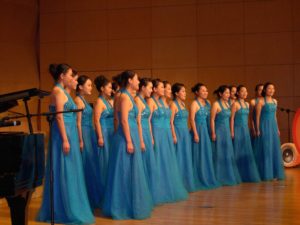
Standard
Chinese choral development faces a number of problems: first, there is little repertoire for choirs to choose from, leading to a lack of breakthrough in the style of performance. Secondly, choir members have not acquired sufficient skills and means to vividly express the affections and the story behind the songs. Thirdly, Chinese choirs sometimes pay too much attention to exterior matters like costumes, make-up, basic skills or technique which have no affections, but neglect internal elements such as the emotions of a repertoire and thorough understanding of the lyrics, rhythm and melody which bring resonance.
The performance style of Chinese folksongs could be traditional, plain and solo; but choirs have to demonstrate its multi-part character. The expression of Chinese folksongs in choral work does not need to stick to the original and its traditional style. Learning theories and skills from foreign countries is for the purpose of singing our own songs, expressing our own affections, showing our own way of life and development, our own choral style. International choral singing is no longer satisfied with the style of simple folksong or bel canto singing, but pursues a huge variety of tune, timbre and sound projection and a new era of “orchestracised” choruses.
Local Productions
The Chinese choral development has been left behind by western countries. There are few masterpieces in Chinese choral music. With the cultural reform in China, choral improvement is a trend of cultural development. Entering into the 21st century, Chinese choral arts have no reason to reject modern music pieces that express the feelings of Chinese people and should not stop at the expression of classical music from the 19th century.
Regarding the adventure of Chinese choral development, first, Chinese conductors must be open to new ideas, understand the contemporary choral situation and trends in the world, calmly listen to modern choral pieces, and accept the ideal of variety in modern choral work. Secondly, they must bravely confront traditional and modern arts, be creative, and actively try various methods of choral practice so as to prepare for promoting and performing modern pieces. Further, they need to strengthen the originality of new modern choral pieces.
Bright, creative and interesting tiny choral pieces should be respected when compared with that large-scale but boring music. Our modern Chinese music in the 21st century should keep the core of our own history and culture and develop our unique style.
Our skill for choral development lies at the heart of the long history of our Chinese culture and the diversified styles of different ethnic groups. If the Chinese choral scene utilises its strengths of diversity and folk styles, excellent and creative pieces that can represent China will be forthcoming. Of course, I should not generalise and deny that Chen Yi who lives in the United States, Se Enkhbayar of Inner Mongolia, Cao Jiangping of Guangzhou, Zhang Yida of Beijing are internationally renowned and first-class Chinese composers.
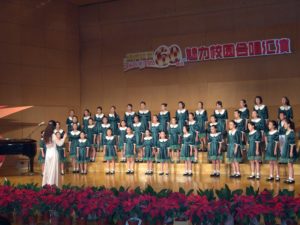
Current Choirs in China must Diversify
Regarding music education policy and sustainable development, the PRC Government should formulate a systematic education policy which is appropriately linked and set up with an independent fund to subsidise brilliant young composers for further study. We have to promote the passion and support for choirs by the public, focus on the linkage of music education among children, youth, university students and the elderly so as to achieve life-long learning, update ourselves on contemporary choral ideas in the world, and widen our horizons.
Of course, training the talents is important. Besides training young conductors, teachers and leaders to take up their roles, we have to train administrative staff to promote choral arts to ensure the comprehensiveness of choral music development. At the same time, individual and corporate sponsorships are crucial to choral development in the present world.
Our national cultural policy directly affects the Chinese choral development. Choral singing should be one of the creative industries in China. We hope that our national leaders would further support choral development through education, media and politics, for example, supporting our excellent choirs when they wish to participate in a concert tour at a foreign music festival, and hosting international choir festivals in China. The Government should also allow tax exemption to companies that sponsor choral development.
To conclude, current Chinese choirs must first step onto the road of popular aesthetic culture and then upgrade themselves from popularism to elite choral work. I believe contemporary Chinese choirs must go through all these steps – an historical process to achieve sustainable prosperity and development.
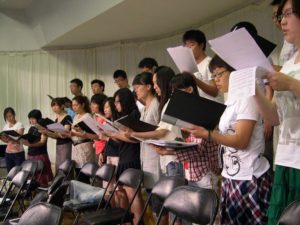
Prof. Tong Shiu-wai Leon
 Vice-President of the International Federation for Choral Music
Vice-President of the International Federation for Choral Music
President of the Hong Kong Treble Choirs’ Association
Artistic Director and Principal Conductor of the Hong Kong Treble Choir
Email: leontong@hktreblechoir.com
Prof. Wu Lingfen
 Advisor of the International Federation for Choral Music
Advisor of the International Federation for Choral Music
Professor and Director of China Conservatory, Conducting Department
Vice-chairman of the China Chorus Association
Member of Ministry of Education, Arts Committee, Professional Group
Email: lingfw@163.com
Mr. Meng Dapeng
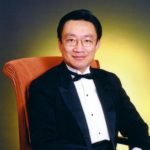 Executive director of the China Choral Association
Executive director of the China Choral Association
Director of the Chinese Treble Choir
Permanent conductor of the Central Junior Broadcasting Choir
Member of the World Choir Council
Email: mengdp@wy.bjzx.gov.cn
Prof. Tian Xiaobao
 Professor at Huazhong Normal University, Music Department
Professor at Huazhong Normal University, Music Department
Director of Huashi Chinese Choral Arts Research Center
Vice-Chairman of Chinese Musicians’ Association, Choral Union
Executive director of the China Chorus Association
Email: xbt220@126.com

